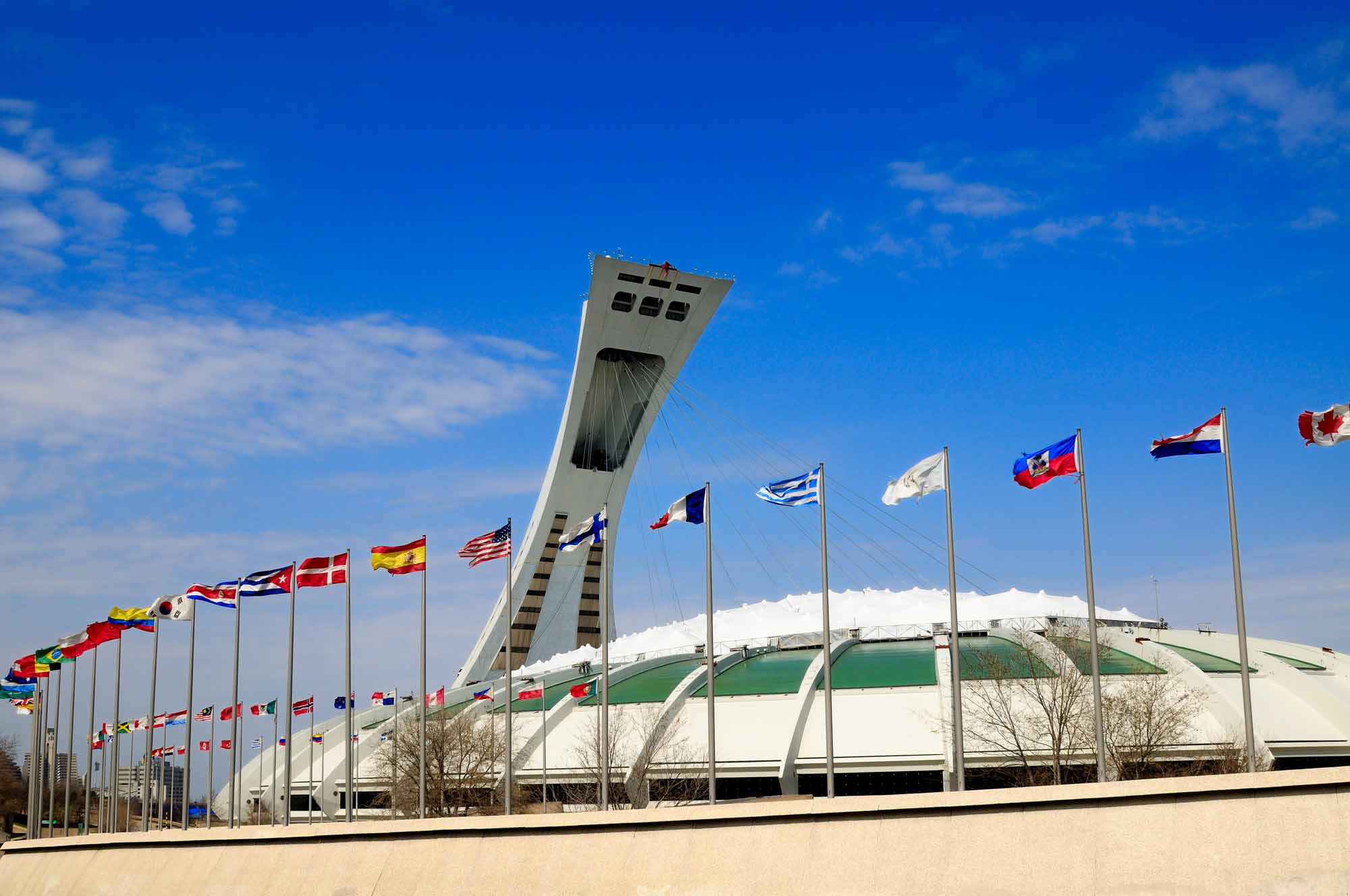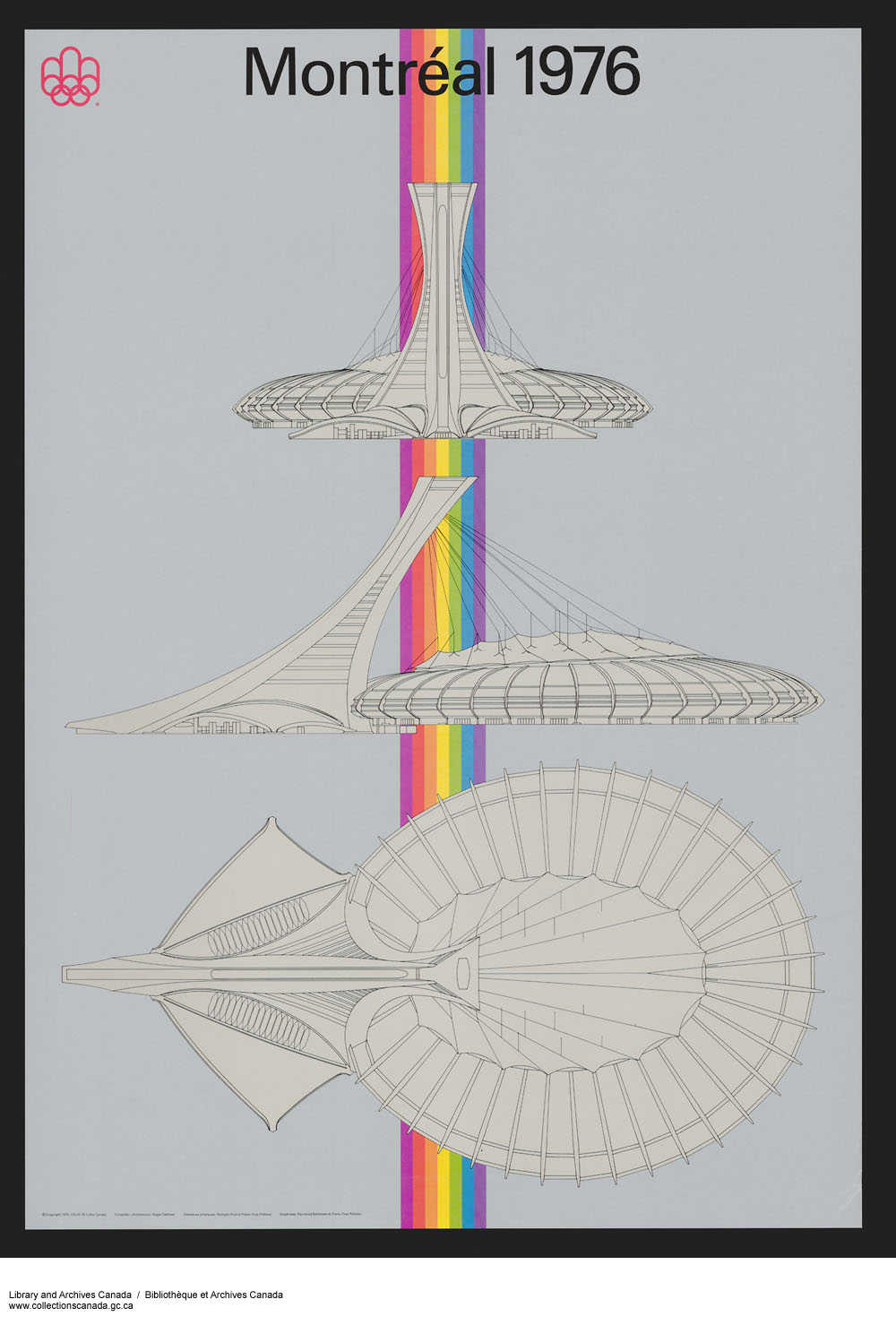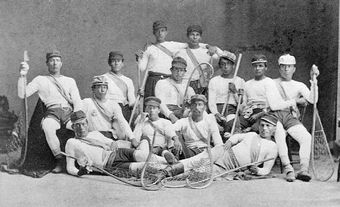Primary venue of the 1976 Summer Olympics. Montreal’s Olympic Stadium is a massive, monumental, multisport complex. It serves as the largest covered amphitheatre and sports venue in Quebec and is also the largest stadium in Canada. (See Sports Facilities.) It has a permanent seating capacity of 56,000. The stadium is integrated into the Montreal Tower (the world’s tallest inclined tower), the Olympic Pool and the former Velodrome — today, the Biodome. The stadium is often referred to as the Big O by Anglo-Montrealers.
The Olympic Stadium sits at the centre of the Olympic Park complex. The complex is itself located in the middle of a sprawling collection of sports facilities, attractions, venues and museums in Montreal’s East End.

Design
The stadium was designed by renowned French architect Roger Taillibert — supposedly Montreal mayor Jean Drapeau’s favoured architect. It is unclear when exactly Taillibert was offered the job of designing Montreal’s stadium. Drapeau had been interested in a sports stadium for nearly a decade before Montreal was awarded the Olympics. Montreal obtained a professional baseball franchise in 1969 (see Montreal Expos) and Drapeau promised the team’s owner a covered stadium within two years. Not long after, Taillibert’s firm apparently began working on the stadium before the Olympics became official. There was no official competition between architects regarding the design. Drapeau’s decision to employ a French architect was not popular among Quebec’s professional order of architects. They wanted the Olympics to showcase local talent.
The stadium’s design was unique among traditional Olympic stadiums. The stadium has a cantilevered tower that suspends the originally retractable roof. The stadium’s main structure is supported by 34 cantilevered concrete “consoles.” This means that the stadium essentially doesn’t rest on the ground. The roof is now permanently closed. The plan was to have a stadium whose roof could be fully open in the summer and closed in the winter, allowing for year-round use. Drapeau also wanted to build a monumental tower for Montreal since the mid-1950s. The stadium project allowed him to accomplish this goal. The stadium and tower were built primarily of pre-stressed concrete.

The site chosen was the southern section of Maisonneuve Park, which was already strongly associated with amateur sports. Both the Maurice Richard Arena and Maisonneuve Sports Centre (today’s Centre Pierre Charbonneau) were already located on the site. Taillibert’s vision was to concentrate all the major Olympic sports venues together on a single site, with as many facilities connecting to one another as possible. Following the design traditions of the era, pedestrians, automobiles, public transit and delivery vehicles were kept separate from one another. The stadium and its associated venues sit atop a series of parking garages with a capacity for about 4,000 cars. The stadium is also connected to the Pie-IX Metro station. (See Montreal Metro.)
Construction of the Olympic Stadium
Construction work began on 28 April 1973. Excavation work alone required removing about 2 million cubic metres of earth from the site. By the spring of 1974, it became apparent construction was behind schedule. Because of this, the city began delegating responsibility of various parts of the project to engineering firms to ensure on-time completion. Construction of the stadium’s foundation began in August 1974. By October 1975, the stadium’s concrete skeleton was mostly complete. By this point, multiple major strikes had seriously delayed construction. Costs were exploding, not only because of delays but also due to corrupt practices known as “featherbedding”. This meant that more equipment than needed is rented out to keep more people on the job site. The Quebec government created the Olympic Installations Board in November 1975. They wanted to ensure that the stadium and its venues would be ready by the games’ opening in July 1976. The Montreal Tower was only completed in 1987. The retractable roof was installed later that year.
The cost of the stadium is difficult to determine. An early estimate for the entire Olympic Park from Jean Drapeau was $180 million. A subsequent estimate produced during the construction of the Olympic Park came to $382 million. The final estimate from 1976, without including the cost of the tower or the roof, came to $922 million. More funds were necessary to complete the project, including the tower, roof and various additional repairs to the stadium. Between 1986 and 2006, these costs added another $448 million to the bill. The installations managed by the Olympic Park cost a total of $1.2 billion in real dollars. These include the Montreal Tower, the Stadium and the Esplanade. The facilities are valued to be worth $4.1 billion in 2017 dollars.
During the XXI Olympiad
The opening ceremonies took place on 17 July 1976 in front of an audience of 73,000 spectators. Over 8,000 people participated in the parade of athletes. The opening ceremonies held at Olympic Stadium were the last that focused primarily on formal, traditional Olympic ceremonial rituals. Beginning with the 1980 Moscow Olympics, opening ceremonies moved towards large-scale, elaborate performances of song, dance and acrobatics based on broad themes and reflective of the host nation’s culture.
The stadium was used for all the athletics events such as track running, pole vault, javelin, and shot put. Football (soccer) and equestrian team jumping finals also took place there.
The closing ceremonies took place on 1 August 1976 in the Olympic stadium. The celebrations were notably disrupted by a naked person running around who had to be escorted out. (See: Montreal Olympics; Canada at the Olympic Summer Games.)
After the Olympics
The Montreal Alouettes began using the stadium when they moved in during the 1976 Canadian Football League season. The Alouettes won the Grey Cup the following year in front of more than 68,000 fans — a Grey Cup attendance record that stands to this day. The Alouettes continued to use the stadium into the 1980s and have returned to play playoff and Grey Cup games in recent years.
Beginning in 1977, the Olympic Stadium became the home of the Montreal Expos professional baseball team. The Expos used the stadium until the franchise was relocated to Washington DC after the 2004 season.
The stadium’s attendance record was set in 1977, when over 78,000 people attended a concert by Pink Floyd. The band was interrupted on several occasions by fans setting off fireworks inside the stadium. An incident occurred when bassist Roger Waters’ spat at an annoying fan. The incident inspired the recording of the album The Wall, arguably the band’s magnum opus.
The stadium has also been used by the city’s professional soccer team, the CF Montreal (formerly the Montreal Impact). The stadium is used for regular season games when their home field, Saputo Stadium, is inaccessible, or when crowds demand a larger venue. In addition, the stadium has been used for a wide variety of other major professional and amateur sporting events.
The tower has become a successful tourist destination with its observatory and funicular. In addition, the base of the tower has twelve floors of rental office space, seven of which are rented by the Desjardins Group.
In 1989, the former Olympic velodrome was redeveloped into the Biodome, a unique environmental museum. Saputo Stadium opened near the base of the tower in 2008. The city’s Planetarium relocated to the Olympic Park and opened in 2013. The Botanical Gardens and Insectarium are also across the street.
The Olympic Stadium continues to serve as a multi-purpose event and sporting venue. Most recently, it hosted pre-season Major League Baseball exhibition games. Many public athletic training facilities are also available. These are used by Canadian Olympic athletes as well as Montrealers in general.
Structural Issues
The Montreal Tower was completed in 1987. This finally allowed the retractable roof to be used. However, it was only opened a total of 88 times and never lived up to expectations. The difficulties with the roof led to several costly repairs over the years. In 2017, the Quebec government announced it would spend $200–250 million to replace the roof.
There have also been other structural problems with the roof and parts of the tower. Support beams inside the stadium also fell off at some point. Despite these problems, the stadium continues to be used.

 Share on Facebook
Share on Facebook Share on X
Share on X Share by Email
Share by Email Share on Google Classroom
Share on Google Classroom


